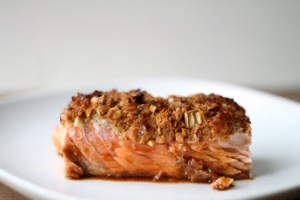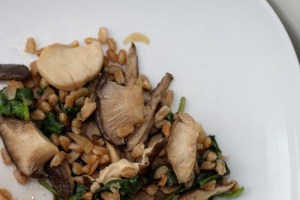Ok, so I am willing to admit that I have a little bit of a problem. Actually, I would rather call it an addiction, it seems more clinical and legitimate that way. I am addicted to buying spices. Now as an avid cook this isn’t inherently a bad thing, but considering I don’t know what to do with at least half of the spices that are currently decorating my fridge…well, yeah, you get it. You see, what happens is that I go to the store to get a spice or seasoning for a recipe I am making (the sane way to slowly build a collection). Then, while I am there I decide that I absolutely need a few others because I once saw a recipe that called for them and certainly I am going to want to buy them someday anyhow. Needless to say those recipes are nowhere to be found, but the spices still haunt me, calling my name, begging to be used.
My guilt about my addiction was the motivation behind this Moroccan chicken stew. I wanted a dish that made abundant use of my spice collection, but that also promised a deeply satisfying meal. I mean I may be a little nuts sometimes, but I am not going to throw together a whole bunch of spices and call it dinner, right? So after thinking, browsing and brainstorming, I finally decided that a Moroccan ‘tagine’ would be the perfect solution. This recipe was not made in a tagine and I can’t promise you that it is authentically Moroccan in any way. However, I can assure you that the savory mix of cinnamon, ginger, turmeric, coriander and cayenne pepper created a richness and depth of flavor that we just don’t find in North American food. Authentic or not, the flavors were authentically fantastic.
This dish is the ideal combination of sweet, savory and spicy. Chicken thighs are left to rest in dry spice mix overnight and then braised until they are so tender that they seem like an entirely separate being than the sawdusty chicken cutlets that so often plague our meals. Dried fruits and olives stud this stew, adding a sweetness and brininess that balances out the rich spices enrobing the chicken. Before serving, all the components are draped over a simple couscous that absorbs the flavorful juices, ensuring that not a smidge of flavor gets left out or left behind. Make sure to get a bit of everything in every bite, the balance of flavors is pretty close to perfect. Don’t thank me, thank my ‘addiction’ and the spices, of course.
Moroccan Chicken
(serves 4)
This recipe can be prepared ahead of time and can me multiplied very easily, so it’s perfect for dinner parties. I made this recipe twice, the first time I served it immediately and the second time I let it cool, kept in in the fridge for 2 days and then reheated it over low heat for 15 minutes, both were equally good.
I highly suggest serving this over couscous; a ‘classic’ base, the couscous absorbs all the juices and flavors. I usually count 1/4 cup per person, for some this wouldn’t be enough so adjust this according to your liking.
Aside from waiting overnight for the chicken in dry rub, this recipe takes only 45 minutes to prepare. Even the extra steps can be done along the way, chop the dried fruit while the chicken is simmering the first time around. Make the couscous in the last 15 minutes. Seriously, I am still trying to figure out how something so quick and easy can have so much depth of flavor.
Ingredients:
8 boneless, skinless chicken thighs (about 1 pound)
1 teaspoon cinnamon
1 teaspoon ginger
1/2 teaspoon turmeric
1 teaspoon coriander
1/2 teaspoon cayenne pepper (this is medium hot, cut this down or up, depending on your taste)
1 1/4 teaspoon kosher salt
1 onion, sliced in half rounds
2 1/2 cups chicken broth
1 1/2 cups chopped dried fruit (I used apricots and figs; dates, currants, raisins are other common choices)
1 1/2 cups pitted green olives
1 cup of couscous, prepared according to package instructions.
Directions:
1) Combine the spices in a large zip top bag. Add the chicken thighs. Shake the bag and make sure that all the thighs are evenly covered in the dry rub, place in the fridge overnight and up to 24 hours (you can also do this in a bowl, but I find zip tops are the easiest way to get everything evenly covered and stored).
2) When you’re ready to make the stew, heat a large pot over medium heat and add the onions. Cook until softened slightly, stirring a few times, about 3 minutes. Lay the chicken thighs in one layer over the onions, sprinkle any excess dry rub over the chicken. Pour in the broth and bring to a boil.
3) Once the broth is boiling, cover and turn the heat down to a simmer. After 15 minutes, flip over the pieces of chicken then add the dried fruit to the pot. Simmer, covered for another 15 minutes.
4) Take the lid off and add the olives, giving the stew a good stir. Simmer, uncovered for another 10 minutes. Serve immediately.















